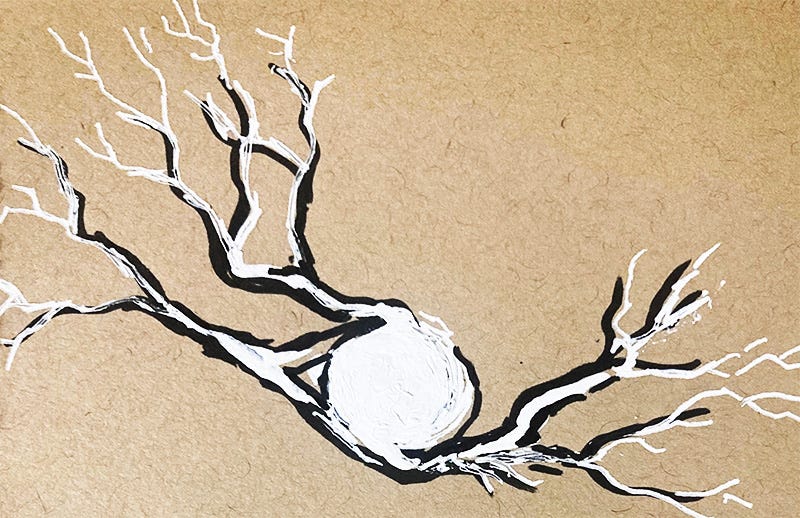Metaphors Be With You
Forging the figurative.
Figurative language is such a seamless part of our everyday communication that we forget it’s even there. Conceptual metaphors are so deeply engrained in the lattice of language we use that they both help us make sense of our realities and distort it beyond our understanding.
In their book Metaphors We Live By (University of Chicago Press, 1980), George Lakoff and Mark Turner have done probably the best job of outlining how comprehensively conceptual metaphors define our world (e.g., time is money, love is a transaction, up is good, down is bad, etc.). There is a point in the evolution of language where we acknowledge a new term or metaphor and that we’re using it, and then there is the space further afield, a “break boundary,” where the metaphor obsolesces into general usage. As Eugene Thacker tells me,
If metaphors are concepts that we forget are metaphors, then it seems important to remind ourselves of the tropic nature of such central concepts as the genetic “code.” Not only does this invite us to think otherwise (to think about alternative metaphors), but it is also an invitation to rethink the entire relation between metaphor and materiality itself.
If the explanatory power of the metaphor in use is successful, the metaphor becomes invisible. If a metaphor obsolesces into general usage, it is forgotten as a metaphor. As William Empson wrote, “Because metaphor, more or less far-fetched, more or less complicated, more or less take for granted (so as to be unconscious), is the normal mode of development of a language.”
Here are three alternative metaphors I’ve been thinking about lately.
1. Poisoning People
It was once believed that the high achieved from eating psilocybin mushrooms was due to a poison. As the system processed and eliminated the poison, it produced the euphoric feelings mushrooms are known for. We now know that is not true, but the metaphor is a powerful one.
You know people who poison your circle, and when they’re around, social situations become largely a matter of metabolizing their energy, processing their presence; however, there is very rarely any high to enjoy.
2. Latent Talents
In Cixin Liu’s 2018 science-fiction novel Ball Lightning, Dr. Chen and his military and scientist colleagues discover that ball lightning is created when lightning encounters “macro-electrons” in the air and supercharges them into the mysterious balls of energy. That is, the materials and conditions for the balls of energy exist in the atmosphere already, making them a product of activation rather than acquisition.
My rough paraphrasing and possibly inaccurate description of the phenomenon do nothing to blunt the power of the metaphor: A lot of what you want to learn or do or be is already evident in you. It doesn’t need to be acquired from the outside world, only activated from within.
3. Gaming the Rules
I’m admittedly not a fan of ball sports, but I do enjoy a well-matched contest of any kind. Icing the kicker is a tactic in football whereby the defensive team calls a time-out just as the offense is kicking a field goal. It is designed to disrupt the flow and throw the kicker off his game. It strikes me as especially egregious because it has nothing to do with the skills involved in the sport. It’s a trick, a troll, and a frustrating way to see a team get ahead.
Call people out for trying to find such shortcuts, maintain your focus, and kick the ball as hard as you can. Stop looking for easy ways and excuses and just commit to getting good at the game, whatever the game may be. No one wins when everyone is trying to get around the rules, but everyone benefits from pursuing excellence, skills, and performance.
—
Language is powerful stuff, and the figurative is where we innovate. Metaphor, metonymy, simile, analogy, and allusion are only a few of the many tools available to explain our world when literal expressions fail. An effective metaphor—by explaining some previously unknown concept—renders itself obsolete and becomes a part of the larger language. Though it’s not always evident in the way we use these tools, the figurative is endless. We should all regularly explore new metaphor.
The Long Bright Dark
During the last episode of season four of True Detective, some cheered and others groaned when Raymond Clark said “time is a flat circle,” repeating Reggie Ledoux and Rustin Cohle’s line from season one. OG creator and showrunner Nic Pizzolato himself did not appreciate the homage to the original. Allusions as such can go either way.
Thank you for reading,
-royc.
http://roychristopher.com
P.S. Apologies to Carrie Fisher from whom I stole the title of this post. R.I.P.




